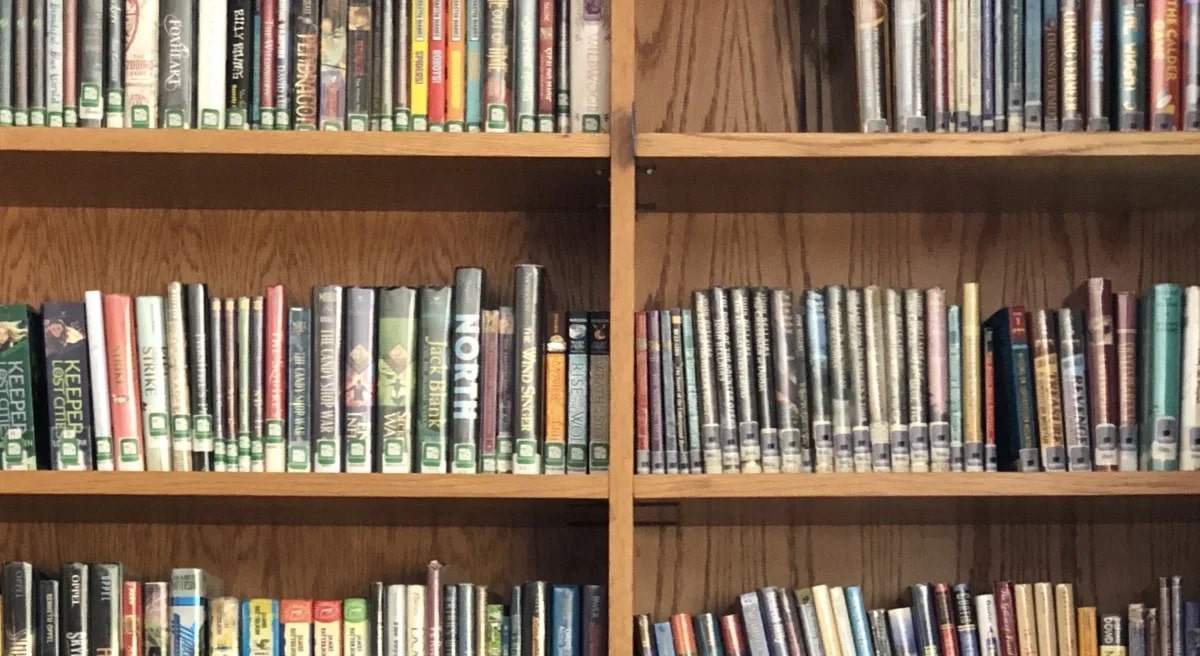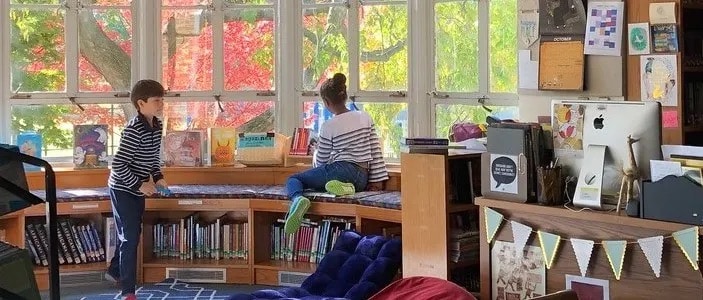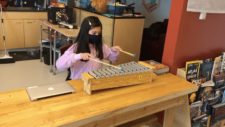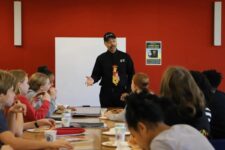As students, faculty, staff, and families adjust to remote and hyflex learning, the Fieldston Lower community is adapting to a new normal: updated facilities augmented with safety measures, reminders to sit six feet apart when on campus, and alternate weeks of in-person and remote instruction. But most aspects of Fieldston Lower, like access to an excellent progressive education and a commitment to maintaining the School’s close-knit community, remain non-negotiable.
Another non-negotiable? Efforts to foster a love of reading and an appreciation for library sciences, even when students have limited in-person access to Fieldston Lower’s beautiful Library.
We really just talk about books all day long. Even when we are working in different pods, helping with language and math, connections to books and stories are always in the air.
Fieldston Lower Kindergarten–2nd Grade Librarian Joan Arrowsmith and 3rd–5th Grade Librarian Jessica Panek are spearheading a campaign to maintain the library experience for Fieldston Lower students, whether they’re on campus, remote, or alternating between the two options. Nowadays, the library experience looks different than usual. Students won’t be visiting the physical library for the time being, but “the enthusiasm and joy that come from a love of learning has not changed at all,” say Arrowsmith and Panek. “The schedule of classes has changed, and the rooms and media we use may be different, but choosing books, finding books they love to read, getting information that is accurate, accessible, and appropriate, that validates their curiosity and wonder, and that provides them with the tools to create meaning are still the same.”

When ECFS’s campuses closed in the spring, the Library went online. Panek and Arrowsmith transitioned to an all-online catalog and developed a digital book collection based on the Fieldston Lower curriculum, with an especial emphasis on diversity and social-emotional resources. “Many curricula depend heavily on books that help to explain, deepen, enrich, and engage students in a study,” the librarians say. “Making sure these books are available in different formats became key.”
A change of format hasn’t stopped what the librarians call the school’s “reading culture”: Since mid-March, almost 5,000 e-books, audiobooks, and interactive books have been checked out.
“We really just talk about books all day long. Even when we are working in different pods, helping with language and math, connections to books and stories are always in the air,” say Arrowsmith and Panek.
Once students are back on campus, they will be able to put physical books on hold using the online catalog with new safety protocols in place. Library Assistant Mette Baccari, a critical member of the library team, will then deliver books to each child’s desk on a daily basis. Returned books will sit in quarantine for one week before anyone else can reserve them. It’s a modification from what students are used to, but the librarians are confident that the students’ love of reading will remain a constant in the midst of so much change.
The Library is also home to a new collection of books to be made available when the students are back on campus. An ECFS alum who started at Fieldston Lower recently donated funds to buy a collection of books about friendship, in honor of a fellow alum who passed away. The books focus on kindness and caring, and are a nod to the bond the donor and their friend made as students at Fieldston Lower.
The librarians are also working on a roster of events that center reading, like storytime for the younger grades or this past spring’s All School Read Aloud, for which faculty and staff took turns reading chapters from “The World According to Humphrey” to a remote audience of students. Events like these are critical to keeping up the community that exists around sharing stories together.
Perhaps the greatest illustration of the new library format is the librarians’ experiences with students. According to the librarians, when students first realized that e-books were available, they would first ask, “But do you have this?”, and then exclaim with joy, “Wait, you have that!” They were thrilled that even without an in-person experience, they could have the library with them at home and not skip a beat when it came to keeping up on their reading.
As Arrowsmith and Panek put it: “The look on a child’s face, whether they are sitting on a bean bag in the library or viewing on a screen from home — that look when they are immersed in a story, when they know exactly what is happening, the smile of understanding and of joy — that has stayed the same.”



